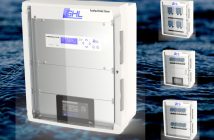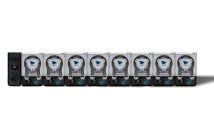We’re starting yet another series of articles relating to the reef and marine aquarium hobby, with this one focusing on keeping a successful reef aquarium without breaking the bank. Called “Reefkeeping on a Budget”, this series of articles will cover everything from aquarium equipment, to livestock, and even maintenance while attempting to not spend more than is absolutely necessary. Of course, this article won’t be limited to those keeping aquariums with a tight budget, as we will attempt to use the topic to help others decrease the operating costs of their tanks. The first topic we’ll discuss will be equipment and pre-build planning, as these are needed to be in place before buying aquarium fish and corals. Article two in the series will cover energy and water usage, with part three being all about livestock purchasing. Wrapping up the series, we’ll discuss maintaining your beautiful budget friendly reef.
The aquarium hobby isn’t exactly an inexpensive hobby to get into, and with reef tanks the prices can climb even higher. Many hobbyists have the benefit of sufficient or even excess cash flow, and have few problems purchasing all of the equipment, live rock, and livestock to run huge aquariums. However, many hobbyists don’t have this luxury and must make sacrifices to keep their hobby alive and their aquariums thriving. These circumstances hold particularly true for young aquarium keepers and college students dabbling in the hobby.
Budgeting for Your Hobby
To begin a wallet friendly approach to keeping a marine or reef aquarium, you must first determine how much money you are comfortable spending on the tank and what aspects of the equipment or livestock are most important. For example, the type of coral you plan on keeping influences almost every piece of equipment operating in the tank, with stony corals most likely leading to a more expensive setup. Your coral choice will limit the type of lighting, amount of water pumps, and even the choices in filtration equipment to name a few. If soft corals are going into the reef tank, your budget can be spread around on other things. If SPS corals are top priority, then you might blow most of your money on lighting and an over-sized protein skimmer. Planning all of these aspects is important if you want to stay on track and not go way over budget. I also want to add that you don’t have to have a pre-determined budget with a firm ceiling. The hobby is always changing, as are the demands of your reef aquarium. It would be best to determine a range of prices for each piece of equipment you plan on running, as well as estimated monthly costs of maintaining the aquarium. This can include everything from water and electricity usage, aquarium consumables like fish food or filtration media, or even future upgrades and replacing worn parts.
Equipment Selection
Now that you know what type of livestock you want to house in your reef tank and the kind of equipment you will need, you must now plan and begin gathering equipment. Since this will take up a large portion of your budget, you might want to spread the purchases out over several months, or even a year or more. It’s not uncommon for aquarium keepers to start gathering equipment a couple of years in advance. Begin by perusing the aquarium forums for used equipment, holding out for good deals, or at least purchases that you are comfortable with.
Pre-owned aquarium equipment is the best way to go if spending is a concern. Even lightly used equipment can sell for half of what it costs new, but make sure you know how old the equipment is and what condition it is in and research sellers thoroughly. After all, you don’t want to send someone a good deal of your aquarium budget and get nothing in return. When hunting for the aquarium itself, there are several things to consider. Besides the age of the tank, find out if there has been any copper used in the aquarium and be sure to take a close look at the seams or silicone depending on what the tank is made of. Inspect the aquarium thoroughly prior to purchase and find out as much information from the original owner as possible.
When purchasing equipment that has parts that need regular maintenance or replacing, hunt for the equipment with the least expensive replacement parts and those that need fewer parts replaced. Some RO/DI filters may have propriety sized filters, meaning it might be difficult to find an inexpensive alternative to the manufacturers replacements. Many protein skimmers use ceramic shafts, which can easily break, causing you to spend more money on that individual piece of equipment.
This is where we’ll stop for part 1, but it may be updated as needed. Stay tuned for part 2 of “Reefkeeping on a Budget” where we will discuss energy and water usage on your aquarium, as well as energy efficient aquarium equipment.







